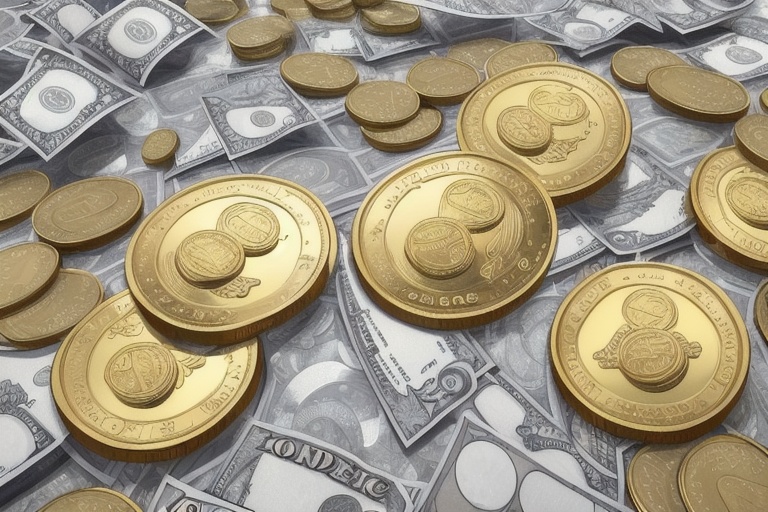The allure of numismatics, the study of currency, traces its roots to ancient civilizations, but it experienced a resurgence during the European Renaissance. This intellectual rebirth sparked an interest in collecting and studying currency, leading to the term "numismatics," which is derived from the French and Latin words for "of coins." Over time, the hobby of coin collecting expanded beyond the exclusive circles of the elite, democratizing the pursuit of assembled treasures from past and present.
The allure of numismatics, the study of currency, traces its roots to ancient civilizations, but it experienced a resurgence during the European Renaissance. This intellectual rebirth sparked an interest in collecting and studying currency, leading to the term "numismatics," which is derived from the French and Latin words for "of coins." Over time, the hobby of coin collecting expanded beyond the exclusive circles of the elite, democratizing the pursuit of assembled treasures from past and present.
The Fascination with Coin Production and Technology
Numismatics is not simply about collecting coins—it's an exploration of their creation and the technology behind their production. Coin collectors often seek to understand and appreciate the intricacies of coin minting, including the metals used, the designs employed, and the methods of production that have evolved over centuries. This deep dive into the physicality of coins enhances the collector's appreciation for their historical significance.
Historical and Cultural Significance
The value of coins is often rooted in their rarity and the contexts in which they were used. Collectors relish the opportunity to own a piece of history, such as coins from significant moments in time or those featuring notable figures. Numismatics serves as a gateway to understanding civilizations and eras long past.
Market Dynamics and Collector Values
The value of collectible coins often far exceeds their original worth, both in terms of face value and material cost. A coin's rarity, condition, and historical significance can skyrocket its value, making it a coveted item among collectors. This phenomenon is particularly pronounced when considering coins with minting errors or those that are no longer in circulation.
Economics at Play: Gresham's Law
Gresham's Law, which posits that "bad money drives out good," is particularly evident in numismatics. Collectors tend to remove high-value coins from everyday use, transforming them into investments or historical mementos. This action is a practical application of Gresham's Law; as collectors prize these coins for their uniqueness and worth, they are withdrawn from circulation.
Pathways to Becoming a Numismatist
The United States boasts various avenues for enthusiasts to become recognized numismatists. Organizations offer specialized courses and certification exams that affirm one's expertise. As part of a broader numismatic community, certified numismatists can share their knowledge and contribute to the field's growth.
Exploring the Digital Age's Impact on Numismatics
In our contemporary society, the internet has propelled coin collecting into an accessible and more widely appreciated hobby. Online resources, marketplaces, and communities have made it possible for anyone to engage with numismatics, regardless of their level of expertise or geographic location.
The Varied Spheres of Numismatic Study
Beyond traditional coin collecting, numismatics spans various sub-disciplines, each focusing on different types of currency and collectibles. Notaphily examines paper money's allure, exonumia explores the world of tokens and medals, and scripophily celebrates the intricate designs of historical stocks and bonds. These subfields allow enthusiasts to specialize and delve deeper into specific areas of interest.
Fun Facts and Notable Collections
Coin collecting is enriched by fascinating trivia and spectacular collections. Historical facts about the development and circulation of coins add color to the practice. Organizations like the Smithsonian House impressive collections, documenting currency's evolution and diversity.
Coin Collecting: A Portal to the Past
Coin collecting offers a tangible connection to history, art, and economics. Each coin tells a story, whether it's a reflection of the society that minted it or the journey it has experienced through trade and transactions. Collectors are custodians of these miniature chronicles, preserving the legacy for future generations.
Investing in Numismatics
Coins can also function as alternative investments. Collectors must, however, navigate this market with care, seeking guidance from experts to ensure wise acquisitions. Coins have the potential to hold or increase their value over time, making them an intriguing option for those looking to diversify their investment portfolio.
Embracing the Multifaceted World of Numismatics
Numismatics is more than a simple hobby—it is a multidimensional field that incorporates history, finance, art, technology, and even biotechnology themes. Coins related to scientific achievements can be of particular interest to those at the intersection of numismatics and science. Similarly, understanding finance principles enriches a collector's strategic approach to growing and maintaining their collection.
Ultimately, numismatics is a journey through time and culture, offering endless possibilities for learning, investment, and appreciation. From exploring the depths of ancient coinage to embracing the marvels of modern minting, the world of coin collecting is both a homage to the past and a beacon for the future. As we continue to explore and celebrate these artifacts, numismatics remains a testament to human history and the perennial value of the coins that have accompanied us along the way.
Information for this article was gathered from the following source.

